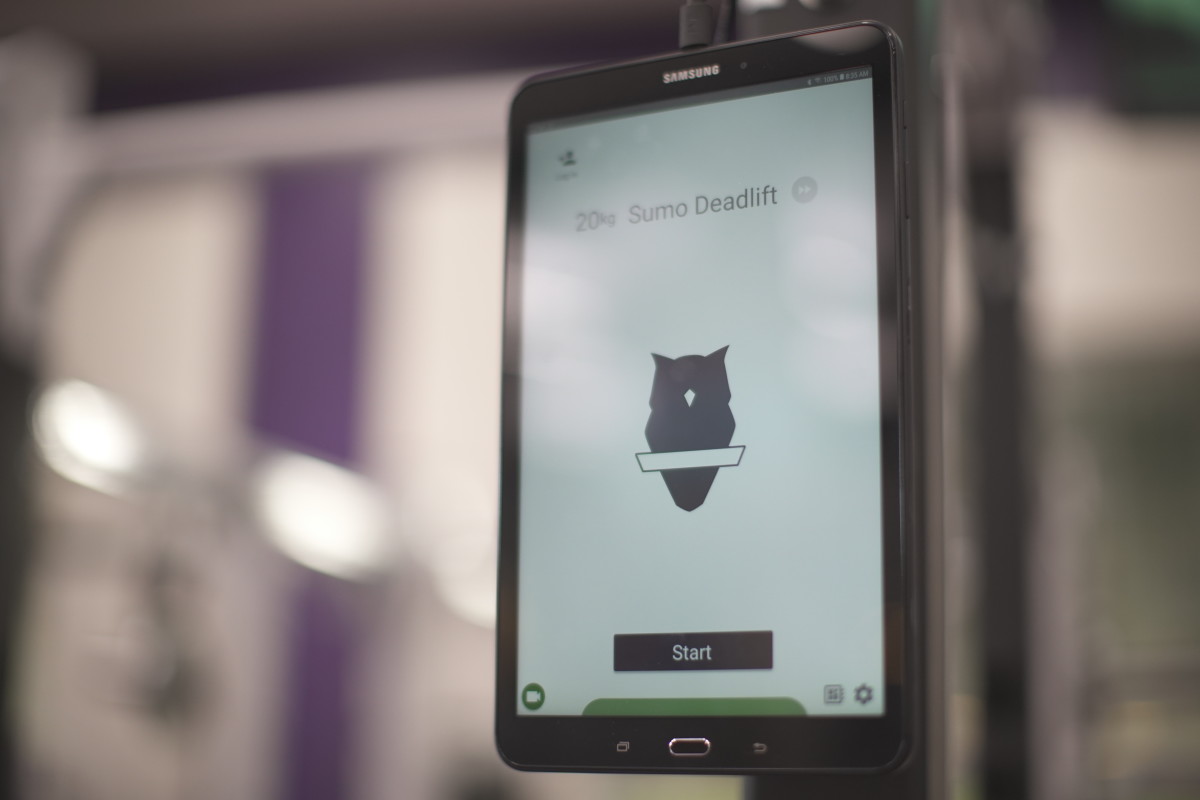An Inside Look at the Technology That Will Help LSU Football Return to Peak Physical Condition

Jacob Rothman was looking for that one client, that one opportunity to show a big-time program his potentially game-changing idea. At the time, Perch was a very young company that had technology that Rothman believed could revolutionize how athletes work out.
So Rothman reached out to various colleges, looking for someone to take a chance, and finally got in contact with LSU strength and conditioning coach Tommy Moffitt in March 2019. LSU, under athletic trainer Jack Marucci and Moffitt, has been a very forward-thinking program in terms of utilizing various technological advances through injury recovery and optimizing best practices for its student-athletes.
Rothman brought the product down to Baton Rouge, demoed it for Moffitt and the LSU staff and let them test it for about a month or two in their weight room.
"They enjoyed the product enough that they decided to outfit their entire weight room," Rothman said. "We supported them throughout their entire 2019–20 national championship season and it was a phenomenal experience because I do think they fundamentally changed the way they strength trained. It allowed them to stay explosive and stay strong throughout the entire length of that season."
LSU was the first "big" customer for Perch, who in the last year has added Duke, Kentucky, the New York Giants and the Miami Dolphins as clients.
So just what exactly is this Perch technology that not only helped LSU capture a national championship in 2019 but also will now become more important than ever in 2020 as athletes restart in-facility training after a three-month dead period?
The idea behind the Perch technology is to add a camera to every weight rack, with a tablet attached to each weight rack as well. An athlete will walk up, log in on the tablet and conduct their normal lift. After every rep, the athlete and strength coach will receive immediate feedback on their velocity and power output.
Each athlete has their own account, so the strength coaches can best gauge where an athlete is in terms of strength and conditioning. The data from the reps done by each individual athlete in a given workout will be stored and saved to best monitor how to approach future workouts with the player.
"It's a very seamless process and it fundamentally changes the way athletes workout," Rothman said. "An athlete can walk up to any system, just tap their name and then when they lift, that data will get stored into their profile."
LSU football has 22 weight racks in its training facility where they perform dead lifts, squats, bench press and power cleans, which Rothman says are the main workout lifts that best measure progress in explosiveness and strength with each athlete.

The typical way strength training progress is gauged is by how much weight is on the barbell, but the most effective approach to getting quick results is how fast the athlete is moving the weight. This method of training is most commonly known as "velocity-based training."
"It's a lot different to move 200 pounds really fast than to struggle with 200 pounds and move it pretty slow," Rothman said. "The idea is that we give the athlete and the coach another level of insight into the quality of the movement of those athletes."
Velocity-based training is exactly what it sounds like, a method of training based on how fast an athlete moves a certain weight as opposed to how much weight is actually on the rack. Technology like Perch allows coaches and athletes to determine the speed of movement in real time and adjust the weight or exercise accordingly.
"The thing that I’ve noticed more than anything is how much healthier our guys are by using velocity-based training," Moffitt said. "You’re able to select the optimal weight and the optimal rep range. Programming is so much easier now...because it takes out all the guesswork. "
Another player in this process who was extremely beneficial to the Perch technology being successfully implemented during LSU's 2019 title run was Tigers assistant strength and conditioning coach Jeremy Jacobs.
Jacobs worked closely with Rothman and the Perch team throughout the season as he primarily oversaw the technology for LSU. He looked at the data every week and made sure the athletes were peaking in terms of optimal physical condition before playing time.
"They were saying they were seeing some of their fastest times on the field last year," Rothman said. "They were able to measure how fast their athletes run on the field and seeing those fastest times toward the end of the season, which just never happens. They attributed a lot of that to optimizing training, making sure guys were getting stronger but not pushing them too hard."
Discovering a baseline for each athlete—whether it's an incoming freshman or a returning player—is just another way in which the Perch technology will help LSU in the coming weeks as it attempts to get its players back in shape.
What Perch allows is for strength coaches like Moffitt and Jacobs, as well as each individual athlete, to find the weight that best suits the athlete and lift at the optimal speed given by the strength coach. For example, if an athlete is lifting to maximize power output, that sweet spot speed would be around 0.7 meters per second.
"If they're lifting 0.8 meters per second, they can add weight to best optimize that workout or if they're moving too slow, it means the weight's too heavy and they can take some off," Rothman said. "Therefore you're protecting yourself if you're fatigued or over-training. So it makes it really easy to see how your athletes are performing and how much weight they should be lifting."
The Perch technology essentially gives the coaches and athlete that real-time data to find the best weight that corresponds with the speed.
That's particularly important this summer as LSU football players are already back on campus and gearing up for voluntary workouts to start on June 8. For athletes that have been out of the training facility for three months, having that data from last year will help Moffitt and Jacobs immensely.
"We collected data all last year. We know exactly how our returning players were performing before they left campus. This gives us a starting point," Jacobs said. "I know how fast my players should be squatting certain weights. If they are moving less weight at the same speed or the same weight a lot slower, I know we have some work to do to get back to our baseline."
Rothman says that velocity-based training will be even more important now that athletes are returning at varying levels of physical shape. Another important component will be for the strength coaches and athletes to build a profile once they return.
This essentially means that an athlete would lift light weight, medium weight and heavy weight and start to generate some hypotheses about what that athlete needs to work on. For example, an athlete might be really strong, but not explosive, or an athlete might be more explosive, but not very strong.
"You can start helping them on the areas of their weaknesses, and take full advantage of a smaller training window because you only have six weeks to get these guys prepared for a season," Rothman said.
"None of them are going to be as strong as they used to be, that would just be very difficult to have maintained. So what we can do is instead of prescribing a weight, they would just prescribe a velocity. They just want to see the velocity in that right range and the athlete will find the right weight that matches that velocity."
Without getting into too much detail, Rothman did reveal that Perch will continue to work on improvements from a software perspective to make it even more efficient for players in the future.
"The idea is that we're going to write a lot more software that will provide a lot more value to the athletes and coaches," Rothman said. "It'll expand beyond just velocity-based training, but really be a weight room performance tool so that whatever you're doing in the weight room, you can get more out of the workout."
